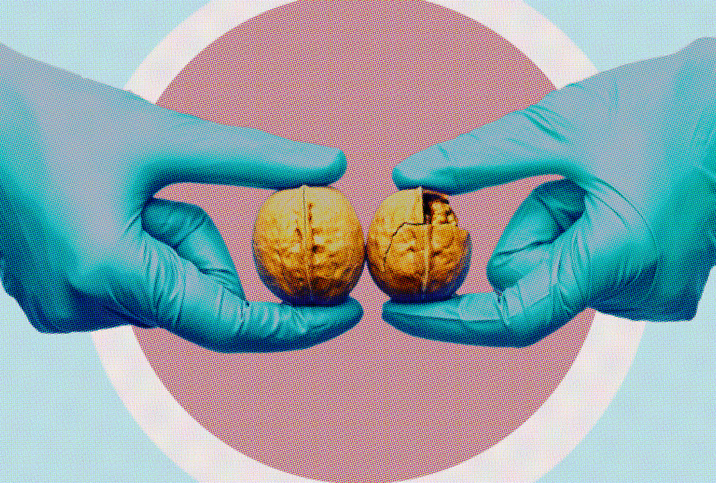My Ballsy Journey: Surviving Testicular Cancer

If you were to meet me prior to October 2016, I was a typical guy in his mid-20s. I had recently bought my first house, had a full-time job and proudly boasted two testicles. But three months later, thanks to a bout with testicular cancer, I found myself one pilot short of a full cockpit.
Like all great stories, this one begins in the shower
Though I didn't make my health a priority, hadn't been to the doctor in years, and didn't subscribe to a nutritious diet, I was in the minority of men who perform regular testicular self-exams that some doctors recommend should be done monthly starting around puberty (although the American Cancer Society offers no such guidelines). Self-exams are best done after a shower, when the scrotum is relaxed, and they're actually pretty easy: Place your index and middle fingers under the testicle with your thumb on top. Firmly but gently, roll the testicle between your fingers. Any abnormal lumps or bumps should be checked out by a doctor.
In the shower, I found a lump on lefty, but had no pain. I felt 100 percent healthy and fine. I had recently completed a Spartan Sprint obstacle course run and was jogging in the mornings (albeit not regularly) before my job as a fourth-grade teacher in Virginia. I had no fatigue, no headaches and nothing that indicated I was sick.
After checking daily, the lump was still there two weeks later. I called a doctor, and by late October, an ultrasound caused my doctor to suspect cancer. Testicular cancer can't be diagnosed with a biopsy, and since the mass looked suspicious, a proper answer could only be confirmed after surgery.
The surgery was not a ball
The medical team stressed how important it was to not postpone surgery in my course of treatment. The testicle was removed at the end of the month. I learned that it wasn't too uncommon to be diagnosed with testicular cancer. About 1 of 250 males will develop testicular cancer at some point during their life. Even being in my 20s didn't make it rare—50 percent of testicular cancer cases occur in males ages 15 to 44.
Nevertheless, my story didn't end with surgery. A scan in early November revealed that the cancer had spread to my lymph nodes. Officially, I was diagnosed as having Stage IIB nonseminoma testicular cancer, which meant I needed chemotherapy to eradicate the cancer in my lymph nodes. I started 21 treatments in late November; initially five days in a row and then scaled back to once a week, all of which concluded at the end of January 2017.
This experience was less than ideal, to be succinct. Throughout the course of my treatments, I experienced hair loss, extreme fatigue, constant nausea and a five-day span of vomiting between each meal. Chemo had totally wiped out my immune system.
My medical journey was soon coming to an end
A scan in March 2017 showed that I was in remission, and I remain in remission to this day. Before cancer, I was like a dog chasing a ball. I buried myself in random projects instead of finding what was meaningful to me. I'm making better use of my time now. I don't have a perfect balance, but I'm making sure I enjoy the life I do have. I was always a very determined person and became even more so throughout treatment.
Another journey arose as I navigated this experience: a desire to open lines of dialogue about men's health. Men are hurting themselves by shielding their experiences. Will talking about your health be uncomfortable? At first, sure, probably. But eventually, if more and more men are willing to share their stories, maybe we can eliminate the stigma surrounding men discussing health and freely talk with one another about touching ourselves in the shower, at least as far as testicular self-exams are concerned. It may be the conversation that saves a life.
Justin Birckbichler is a men's health advocate, testicular cancer survivor and the founder of aBallsySenseofTumor.com.


















Commentary